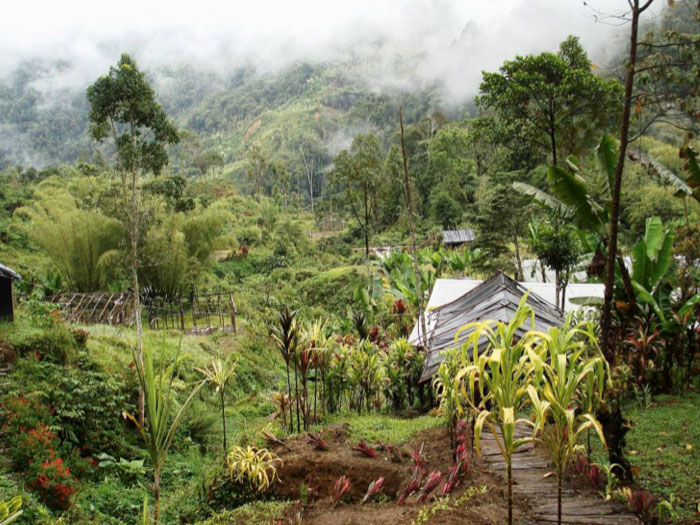Crater Gold Mining Ltd provides an update on the High Grade Zone (HGZ) and South Artisanal Workings (SAW) projects at Crater Mountain, PNG.
- 1930m RL adit development at HGZ completed
- Multiple N-S, E-W and cross cutting veins identified along 1930 m RL adit
- Visible gold noted in 1930 m RL veins, with mineralisation widening with depth
- New adits at 1950 m RL and below 1930 m RL planned to increase gold production
- Processing plant being upgraded with further investment in machinery to accommodate increasing the plant throughput rate by 100%
- Widespread gold mineralisation obtained from trench sampling at the SAW prospect.
The 1930 m RL adit development, which commences at 1930 m RL and ramps up to 1935 m RL where it reaches the mineralised veins, has now been completed. Steeply dipping extensions of the JL, JL01 and JL02 N-S orientated veins have been encountered and mining of them has commenced. Extensions of veins NV01, NV02, N03 and LNK01 have also been identified and encouragingly their defining structures have been noted to be progressively widening with depth from the 1960 m level to the 1930 m level. Similarly, numerous east west structures have also been identified.
The geology observed reflects similarities to the 1960 m level development and has firmed up confidence in mining out the structures identified at the 1930 m level and developing them upwards to the 1960 m level. Detailed geological mapping has established that the N-S structures are developed within a strongly to moderately brecciated unit that hosts mineralized vuggy quartz veins associated with distinctive clay-manganese-hematite-jarosite-kaolinite-illite alteration. Sampling has commenced on E-W and N-S structures identified along the walls of the 1930 m adit.
The alteration has provided a vital aid in vectoring into mineralised zones. This will greatly assist in tracing the extent of the mineralised zones further to the east, west and north.
As previously announced historical drilling indicates that gold mineralisation extends to at least the 1890 level and an inferred gold resource of 44,500 t at 11.9 g/t Au for 17,100 oz of gold (cutoff of 5 g/t Au) has been estimated by Mining Associates for that zone. It is encouraging to note that many of the mineralised N-S and E-W structures encountered in the adit developments are not contained within this initial resource zone estimate.
Gold output is expected to re-commence in November and is anticipated to increase monthly into 2019. To achieve this, another sub-level at 1950 m RL is planned, together with new levels below 1930 m RL. This will allow production from a number of main vein locations at any one time and also provide access to additional zones of narrow cross cutting veins. Upgrading of the processing plant to accommodate increased production is in progress.
Further investment has been made in machinery aimed at improving the efficiency of mining and increasing the plant throughput rate by 100 % while also increasing the gold recovery rate by up to 10%. The equipment is currently in customs awaiting clearance.
Gold sales are due to re-commence in the coming weeks.
Crater Gold Managing Director Russ Parker said “the 1930 m RL development has intersected extensions of the veins and structures encountered in higher levels and shown that they have persisted to depth and widened. It is anticipated that with access to more mining faces and the plant upgrade, increasing levels of gold production can be achieved”.
The road between the Crater Mountain Camp and the nearby Guasa Airstrip will be upgraded towards the end of the year. This will allow vehicular access to transport mining consumables and other necessary cargo to site. Helicopter transport of these items between Guasa and the Mine Site would then be no longer required which would reduce logistical costs significantly.
The SAW prospect is located 430 m southwest of HGZ and straddles Mining Lease ML510 and Exploration Licence EL1115. Assay results have now been received for 152 rock samples consisting of 122 channel samples collected from three contour trenches excavated to investigate an area of previous artisanal drives and 30 rock chip samples collected from creeks in the vicinity.
Results have revealed widespread gold mineralisation in the trenches excavated over the artisanal workings and anomalous high values from exposed bedrock along the creeks. Considering the thick tephra cover which masks much of the area, the results are considered to be encouraging. Fifty samples returned gold values in the range 0.1-0.5 g/t Au, three samples returned values in the range of 0.5-1.0g/t Au and eight samples returned values >1.0 g/t Au, with a high of 15.6 g/t Au.
The mineralisation is hosted by E-W and N-S structures which may be splays from regional structures. The occurrence bears similarities to the HGZ project area and could be an extension of the latter or another independent high-grade gold zone.











